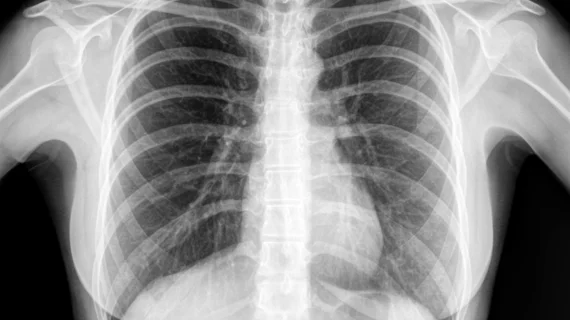Can scatter correction software replace physical grids?
X-ray scatter software is beneficial in enhancing the quality of medical imaging and reducing patients' exposure to ionizing radiation, but is it a suitable alternative to the use of a physical grid and other dose reduction techniques?
A new paper published in the European Journal of Radiology addressed these questions after conducting a scoping review of literature relative to scatter reduction software. Their analysis of more than 20 years of data concluded that although the software has numerous benefits, such as a reduction in patient doses, it is not appropriate in all circumstances [1].
“The clinical application of X-ray scatter correction software was found to be limited to specific body parts and clinical circumstances, such as the cervical spine, chest, shoulder, lumbar spine, hip, pelvis, and bed chest radiography,” corresponding author of the paper Mohamad Sayed, of the Diagnostic Radiology Department at the College of Applied Medical Sciences in Saudi Arabia, and co-authors explained.
Although the experts included 20 years’ worth of publications, their assessment was still limited to a total of 11 studies. Those studies utilized patients, image quality phantoms and anatomical phantoms to test the effectiveness of scatter software relative to dose reduction and image quality. The authors acknowledged that this was somewhat of a limitation in their analysis, as phantoms cannot perfectly duplicate real anatomy.
They found that scatter correction software was effective at reducing patient doses while also enhancing image quality. However, the benefits were limited by anatomical regions and sizes, with smaller areas with less adipose tissue, such as extremities, displaying the most improvement in scatter reduction. These are also areas that do not require as high of a dose to begin with, the authors explained. Of note, the authors were unable to locate any studies testing the efficacy of scatter correction software on abdominal imaging, which is an area where scatter radiation occurs most frequently due to anatomical thickness.
“In general, a physical grid provides higher image quality but with a higher radiation dose compared to the case of scatter correction software and no physical grid present,” the authors wrote.
There are a number of factors that need to be considered when assessing the impact of scatter correction software, such as patient size, kVp levels, patient positioning and clinical circumstances, etc., the authors explained. However, much of this information was not available to them in the literature included in their study. For that reason, the authors concluded that although the software is beneficial in some circumstances, those benefits cannot yet compensate for the lack of a physical grid in most instances.
The study abstract is available here.

